Flavor Taste
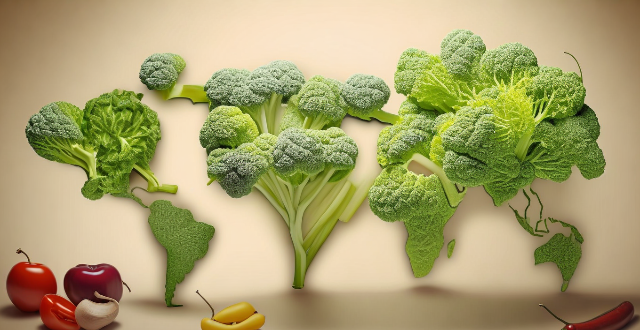
What role does cilantro play in Mexican cuisine in terms of flavor ?
Cilantro is a key herb in Mexican cuisine, adding flavor, aroma, and freshness to dishes. Its unique taste, described as citrusy, grassy, and slightly peppery, complements the bold and spicy flavors of Mexican cooking. Cilantro is used in salsas and guacamole, soups and stews, marinades and rubs, tacos and enchiladas. Its citrusy notes cut through rich ingredients, grassy undertones provide a refreshing contrast, and its peppery bite adds complexity. Cilantro is essential for enhancing the taste and aroma of Mexican dishes.

Can you explain the concept of umami in Japanese cooking ?
Umami is one of the five basic tastes, along with sweet, sour, salty, and bitter. It is often described as a savory or meaty taste, and is commonly found in foods such as mushrooms, soy sauce, and aged cheeses. In Japanese cooking, umami is considered an essential flavor profile that adds depth and complexity to dishes. The science of umami is caused by the presence of glutamate, a type of amino acid, in food. When we eat foods that contain glutamate, it stimulates our taste buds and sends signals to our brain that register as a distinct taste. This taste is often associated with protein-rich foods like meat, fish, and vegetables. In Japanese cuisine, umami is used to enhance the flavors of dishes and create a more complex taste profile. Some common ingredients that are high in umami include miso (fermented soybean paste), dashi (Japanese broth made from dried fish and seaweed), soy sauce, dried shiitake mushrooms, and kombu (a type of seaweed). Umami is used in a variety of ways in Japanese cooking. For example, miso soup is made by mixing miso paste with dashi broth to create a savory soup that is often served as part of a traditional Japanese breakfast. Sushi combines vinegared rice, fresh fish, and soy sauce to create a perfect balance of flavors that includes umami. Ramen noodles use a broth made with chicken or pork bones, which are rich in umami. Teppanyaki involves grilling meat and vegetables on a hot plate, which helps to release their natural umami flavors. In conclusion, umami is an important flavor profile in Japanese cooking that adds depth and complexity to dishes. By using ingredients that are high in glutamate, chefs can create dishes that are both delicious and satisfying.

How do you describe the taste of authentic Mexican cuisine ?
Mexican cuisine is a vibrant and complex blend of flavors that can be both bold and subtle. Here are some key characteristics that describe the taste of authentic Mexican food: ### Spicy Heat Chili peppers and spices like cumin, oregano, and cinnamon add depth of flavor to many dishes. ### Acidity and Tanginess Lime juice and tomatoes provide refreshing acidity and tanginess, while also contributing sweetness. ### Earthy and Nutty Flavors Beans, corn, and nuts offer earthy undertones and richness to Mexican cooking. ### Sweetness and Fruitiness Fruits such as pineapple and mango, as well as vegetables like sweet potatoes, bring a touch of sweetness to savory dishes. ### Umami Richness Cheese and slow-cooked meats contribute deep, savory flavors to Mexican cuisine. ### Herbaceous Notes Cilantro and epazote provide distinctive, fresh flavors that are essential in traditional cooking. ### Texture Variety Crunchy vegetables and creamy avocado-based sauces offer a range of textures that balance spicier elements. ### Bold and Aromatic Garnishes Onions and cilantro are often used as garnishes, adding sharpness and freshness to dishes. Overall, authentic Mexican cuisine is a harmonious combination of spicy, tangy, sweet, umami, herbaceous, and textural elements that create a complex and satisfying gustatory experience.

What are some gluten-free breakfast options that don't sacrifice flavor ?
Gluten-Free Breakfast Options that Don't Sacrifice Flavor: Gluten-free pancakes, oatmeal with fruits and nuts, egg dishes, smoothies, gluten-free cereals, and breads are all delicious and healthy breakfast options for those who are gluten-free.

How does the use of chilies contribute to the distinctive taste of Mexican food ?
Chilies play a pivotal role in Mexican cuisine, contributing heat, flavor complexity, color, and cultural significance. They offer varying intensities of spiciness, from mild to very hot, and their fruity or earthy flavors complement other ingredients. Visually appealing with vibrant colors, chilies also have nutritional benefits like antioxidants and metabolism boost. They are versatile in cooking, used fresh, dried, or smoked, and pair well with acidic and herbal ingredients. Chilies are integral to traditional dishes like enchiladas and mole sauce, showcasing their essential role in defining the unique taste profile of Mexican food.
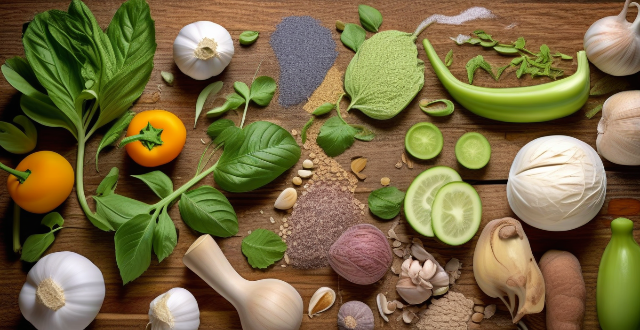
What ingredients are commonly used in Mexican cooking to create its unique flavor profile ?
The article provides an overview of the key ingredients used in Mexican cooking, including chili peppers like ancho, jalapeño, serrano, and habanero; herbs and spices such as cumin, coriander, oregano, and cilantro; and other ingredients like tomatoes, onions, garlic, lime juice, epazote, and hominy. It explains how these ingredients contribute to the distinctive flavor profile of Mexican cuisine and encourages readers to experiment with creating authentic Mexican meals at home.

How do organic foods affect taste and nutrition ?
Organic foods have become increasingly popular due to concerns about health, environment, and sustainability. The article discusses the impact of organic farming on the taste and nutrition of food. It suggests that organic foods may have a richer flavor profile due to slower growth rates and no artificial flavorings. However, studies have shown mixed results regarding the nutrient content of organic versus non-organic foods. While some studies suggest higher levels of certain nutrients in organic produce, others find no significant difference. Additionally, organic farming practices aim to reduce pollution, conserve water, and promote biodiversity, contributing to a healthier planet. Ultimately, personal preference, budget, and individual health goals will play a role in deciding whether to opt for organic options.

What are some tips for balancing sweet and sour flavors in cocktails ?
"Balancing Sweet and Sour Flavors in Cocktails: Tips and Tricks for Crafting Perfect Drinks"

How can I make sure my paella has the right consistency and flavor ?
To ensure your paella has the right consistency and flavor, choose short-grain rice like Bomba or Calasparra, use fresh proteins and quality vegetables, cook with proper techniques including sofrito caramelization and correct liquid ratios, season well with salt and additional spices, let it rest before serving, and garnish with lemon wedges and parsley.

What makes the flavor of street tacos in Mexico different from those found elsewhere ?
The flavor of street tacos in Mexico differs from others due to authentic ingredients, traditional cooking methods, regional specialties, vibrant street food culture, and a variety of condiments.

How do I get that restaurant-quality flavor in my homemade crab cakes ?
How to Achieve Restaurant-Quality Flavor in Homemade Crab Cakes: - Freshness and quality of ingredients are crucial. - Lump crabmeat is preferred for its sweet flavor and good texture. - Use a combination of seasonings like Old Bay, mustard, Worcestershire sauce, and hot sauce. - Bind the mixture with mayonnaise or mustard lightly. - Pan-fry or oven-bake the crab cakes for different textures. - Serve with remoulade sauce and sides like green salad or roasted vegetables. - Allow the crab cakes to rest before cooking and avoid overcrowding the pan.

How do I properly season my stir-fry dishes ?
When it comes to stir-fry dishes, seasoning is key to achieving that perfect balance of flavors. Here are some tips on how to properly season your stir-fry dishes: 1. Choose the right ingredients: Select fresh vegetables and proteins that will complement each other in terms of flavor and texture. 2. Use a variety of sauces and spices: Experiment with different sauces and spices to find the perfect combination for your dish. 3. Balance sweet, sour, salty, and spicy flavors: A good stir-fry should have a balance of these four flavors. 4. Cook in batches and use high heat: Cook your ingredients in batches over high heat to ensure even cooking and maximum flavor. 5. Taste and adjust as needed: Taste your stir-fry as you go and adjust the seasoning as needed.

What's the best way to infuse alcohol with fruits or spices ?
Infusing alcohol with fruits or spices is a great way to add flavor and complexity to your drinks. Here are the steps to do it right: Materials Needed: - Alcohol of your choice (vodka, rum, gin, etc.) - Fresh or dried fruits/spices - Clean glass jar or bottle with a tight-fitting lid - Fine mesh strainer or cheesecloth - Funnel (optional) Steps to Infuse Alcohol: 1. Choose Your Ingredients: Pick high-quality fruits and spices that complement the flavor profile of your chosen alcohol. Popular combinations include vodka with citrus fruits or jalapeño, rum with tropical fruits or cinnamon, and gin with juniper berries or lavender. 2. Prepare Your Ingredients: Wash and chop fresh fruits into small pieces. For spices, use whole spices like cinnamon sticks or crush them slightly to release more flavor. Dried fruits can be used as they are. 3. Infusion Process: Fill your clean glass jar or bottle with the prepared fruits/spices, leaving about 1/4 of the container empty at the top. Pour in the alcohol until the fruits/spices are fully submerged. 4. Seal and Shake: Close the jar tightly and shake well. Store it in a cool, dark place, shaking it occasionally over the next few days to help release the flavors. 5. Taste Testing: After about 3-5 days, taste your infusion. If it's not strong enough, reseal and let it sit for a few more days. The longer it sits, the more intense the flavor will become. 6. Straining and Bottling: When you're satisfied with the flavor, strain the mixture through a fine mesh strainer or cheesecloth into a clean jar or bottle. Use a funnel to transfer it without spilling. 7. Enjoy! Your homemade infused alcohol is now ready to be enjoyed in various cocktails or served neat over ice. Remember, the quality of your ingredients matters greatly. Always use fresh fruits and high-quality alcohol for the best results. Cheers!

How can I make my favorite dishes vegetarian without sacrificing flavor ?
How to Make Your Favorite Dishes Vegetarian Without Sacrificing Flavor

How can I tell if my shrimp is cooked properly ?
Cooking shrimp perfectly requires attention to color, texture, curvature, and flavor. Look for an opaque white color, firm but not hard texture, slight "C" shape curvature, and a clean, sweet flavor without fishiness. Use a thermometer, watch the timing closely, choose the right cooking method, and practice regularly to achieve culinary perfection with your shrimp dishes.

How do professional bartenders measure ingredients for consistency ?
Professional bartenders use a variety of tools and techniques to measure ingredients consistently. Accuracy is crucial for maintaining the same flavor profile and balancing different tastes in cocktails. Efficiency is also important, as it speeds up drink-making and allows bartenders to focus on customer interaction. Jiggers are commonly used tools for measuring both large and small quantities of liquids. Measuring spoons are used for smaller amounts like bitters or syrup. Digital scales are used for precise measurements by weight, especially for ingredients like fruit juices or syrups. Pour spouts and containers help control the flow of liquids to reduce spillage and waste. Standardization processes such as recipe cards, batching, and taste testing are also essential. Recipe cards include detailed measurements for each ingredient, helping new bartenders learn quickly and maintain consistency. Batching involves pre-mixing a large volume of a single cocktail ingredient or an entire recipe, saving time during busy shifts and ensuring uniformity. Taste tests are crucial even with precise measurements, as bartenders adjust recipes based on customer feedback and ingredient freshness. In conclusion, professional bartenders rely on a combination of tools, techniques, and standardized processes to measure ingredients consistently. This ensures that they can replicate the perfect cocktail every time, providing a high-quality experience for their customers.

How can I use bitters to enhance my cocktail recipes ?
Bitters are a crucial ingredient in many cocktails, adding depth and complexity to the flavors. Here's how you can use them to enhance your cocktail recipes: Understanding Bitters: Bitters are concentrated alcoholic extracts made from herbs, spices, fruits, and other botanicals. They are typically used in small amounts to add a subtle, aromatic flavor to cocktails. There are several types of bitters available, each with its own unique flavor profile. Using Bitters in Cocktails: Here are some tips for using bitters in your cocktail recipes: start small, experiment with flavor combinations, use as a garnish, and create your own bitters. Overall, using bitters is an easy way to elevate your cocktail game and create unique, complex flavors that will impress your guests.
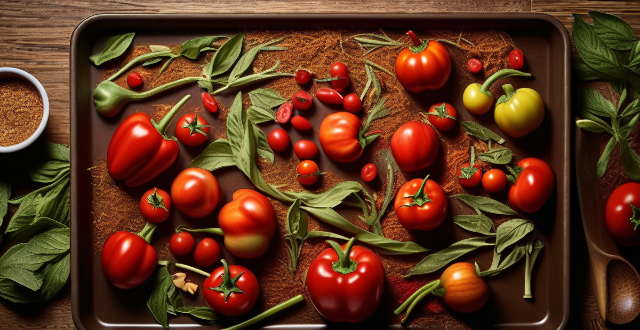
How can I recreate authentic Sichuan flavors at home without making it too spicy ?
To recreate authentic Sichuan flavors at home without making it too spicy, focus on understanding key flavor components like Ma La (numbing spice), hot and spicy, and sweet and fragrant. Select ingredients carefully, using moderately hot chili peppers and Sichuan peppercorns sparingly. Incorporate aromatics like garlic, ginger, and doubanjiang. Utilize cooking techniques such as toasting peppercorns, controlling heat with a mix of chili forms, balancing flavors, and tasting as you cook to adjust seasoning. Try making a classic Sichuan dish like Kung Pao Chicken with these tips in mind to achieve an authentic taste without overwhelming spiciness.

How can I spice up my usual home-cooked meals with new flavors ?
To spice up your usual home-cooked meals, try using fresh herbs and spices, exploring global flavors, incorporating acids and sweetness, and adding textures and garnishes.
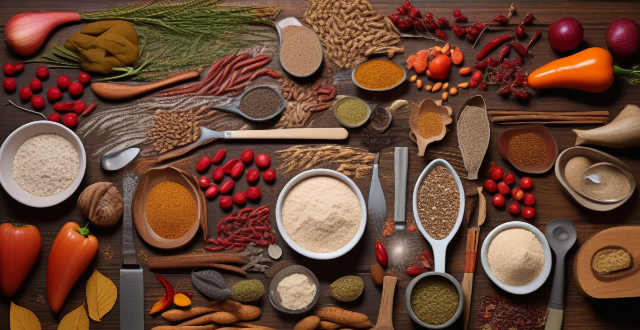
What is the significance of spices in Indian cooking ?
The significance of spices in Indian cooking is multifaceted, encompassing flavor enhancement, cultural traditions, and medicinal benefits. Key spices like turmeric, cumin, coriander, mustard seeds, fenugreek, red chili powder, garam masala, curry leaves, asafoetida, and tamarind contribute to the complex flavor profiles characteristic of Indian cuisine. These spices are used through techniques such as tempering, grinding, and roasting to create a balance of tastes and visual appeal. Historically, spices were valuable commodities in trade and are integral to traditional medicine and religious practices. Regional variations in spice use reflect India's diverse geography and cultural heritage. Understanding the nuances of spice usage allows for a deeper appreciation of the artistry behind Indian dishes.
![What are the best places to eat like a local in [insert city/country] ?](/images/2kge/2befbfac-8832-4928-9125-7d71418d7604.png)
What are the best places to eat like a local in [insert city/country] ?
In this guide, we explore the best places to eat like a local in [insert city/country], from street food vendors and hole-in-the-wall restaurants to bustling markets and bazaars. These spots offer authentic flavors and a taste of the local culture, making them must-visit destinations for anyone looking to truly experience the local cuisine. Whether you're in the mood for fresh seafood or bold flavors, there's sure to be something that satisfies your cravings. So come hungry and get ready to indulge in some delicious local fare!

What are the key ingredients in Indian cooking ?
Indian cuisine is known for its rich flavors and diverse dishes. The key ingredients that make Indian cooking unique are spices, herbs, ghee, lentils, rice, yogurt, nuts and seeds, and bread. These ingredients add flavor, color, and aroma to the dishes and create authentic and delicious Indian cuisine.
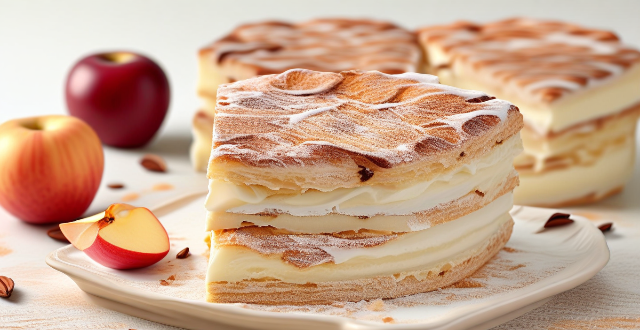
What are some tips for making vegan desserts that everyone will love ?
To make vegan desserts that everyone will love, consider these tips: use natural sweeteners like maple syrup and agave nectar for rich flavor; incorporate nut butters such as almond and cashew for creaminess; experiment with flours like almond and oat for baking; add spices and extracts like vanilla and cinnamon for depth of flavor; utilize fruits like apples and bananas for natural sweetness; use dairy substitutes like coconut milk and almond milk for creamy textures; get creative with chocolate by using vegan brands or carob; and focus on texture by adding nuts, seeds, and dried fruits. By following these guidelines, you can create desserts that are not only vegan but also deliciously satisfying.

Why is French cuisine, including desserts, considered among the finest in the world ?
French cuisine, including desserts, is renowned worldwide for its exquisite flavors, meticulous preparation, and artistic presentation. This reputation is due to factors such as historical significance, quality ingredients, artisanal methods, chef training, innovation, and attention to detail. French cuisine has a long history dating back to medieval times when it was influenced by various cultural invasions and trades. Over centuries, French chefs refined their techniques, creating a rich culinary tradition that emphasizes depth of flavor and precision in cooking methods. French cuisine places a high value on using fresh, high-quality ingredients, often sourced locally. The variety of ingredients available in different regions of France allows for a wide array of dishes and flavors. French baking traditions, such as those used in making croissants and baguettes, involve complex processes that yield exceptional results. Many French desserts, like macarons and éclairs, are handcrafted with care, ensuring each piece is of the highest quality. France is home to some of the best culinary schools in the world, where future chefs receive rigorous training. Young chefs often learn from experienced masters through apprenticeships, preserving techniques and recipes. French chefs are known for their innovative approaches to traditional dishes, pushing the boundaries of gastronomy. The integration of international flavors into classic French dishes keeps the cuisine dynamic and exciting. French cuisine emphasizes not just taste but also the visual appeal of the dish, making every meal an experience. The emphasis on all senses—smell, sight, taste, touch, and even sound—creates a comprehensive dining experience.

What are some dinner recipes that are gluten-free and still taste great ?
Gluten-free diets have become increasingly popular in recent years, not just for those with celiac disease or gluten sensitivities but also for those looking to try a new way of eating. Luckily, there are plenty of delicious dinner recipes that are gluten-free and still taste great. Here are some of our favorites: 1. Grilled Chicken with Roasted Vegetables 2. Quinoa Stuffed Bell Peppers 3. Gluten-Free Pizza

How do Mexican spices and seasonings combine to create their iconic flavors ?
**Mexican Spices and Seasonings: A Flavorful Fusion** Mexican cuisine is renowned for its vibrant flavors, derived from a mix of spices and seasonings that reflect the country's rich history and cultural diversity. These ingredients add depth and character to dishes, creating iconic Mexican flavors through careful combination and layering. Key components include chili peppers like ancho, poblano, jalapeño, serrano, and habanero; herbs such as cilantro, epazote, and marjoram; aromatics like onions, garlic, and tomatoes; dried spices including cumin, coriander seed, cinnamon, and clove; and condiments like lime juice, salt, and peppercorns. The signature flavor is created by layering heat and sweetness, balancing herbal notes, building depth with aromatics, enriching with dried spices, and finishing with acidity and salt. This intricate blend of flavors makes Mexican food beloved worldwide.

How do I pair cocktails with food for optimal taste experiences ?
Pairing cocktails with food can elevate your dining experience to a whole new level. Here are some tips on how to do it right: 1. Consider the flavor profile of your food. For bold and spicy dishes, you might want to consider cocktails that can stand up to the strong flavors, such as Margarita or Mojito. For lighter dishes, opt for a cocktail that won't overpower the subtleties of the food, like Champagne Cocktail or Whiskey Sour. 2. Match intensity. If you're having light bites or snacks, opt for lower-alcohol cocktails that won't weigh you down, such as Sherry Cobbler or Gin Fizz. For more substantial meals, you might want something with a bit more oomph, like Old Fashioned or Negroni. 3. Think about sweetness. For dessert courses, you'll want a cocktail that can match the sweetness, such as Pina Colada or White Russian. For savory dishes, avoid overly sweet cocktails that might clash, like Daiquiri or Cosmopolitan. 4. Don't forget about acidity. For dishes with a lot of acidity, like lemon-based sauces or vinegar dressings, you might want a cocktail that can stand up to it, such as Woo Woo or Kir Royale. For rich, creamy dishes, a touch of acidity in your cocktail can help cut through the heaviness, like Martini or Bramble. 5. Experiment and have fun! The most important thing is to find what you enjoy. There are no hard-and-fast rules, so don't be afraid to try something new. The best pairing is the one that brings you the most pleasure!